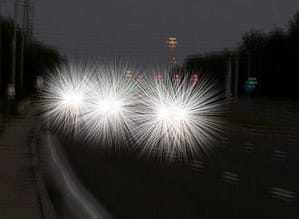Night Vision
Risks of LASIK
Learn the facts about loss of night vision after LASIK

In November 2016, the FDA announced results of a new LASIK study. FDA official, Malvina Eydelman, M.D., summarized the study findings saying, “Given the large number of patients undergoing LASIK annually, dissatisfaction and disabling symptoms may occur in a significant number of patients.” Up to 46 percent of participants who had no visual symptoms before surgery reported visual symptoms such as halos, starbursts, glare, and ghosting at three months after surgery.
A survey of physicians who underwent laser eye surgery from 2000 to 2012, which was published in the March 2014 issue of the Journal of Cataract and Refractive Surgery, exposed the following rates of post-surgical adverse effects reported by physician-respondents: “glare (43%), halos (41%), and [trouble] seeing in dim light (35.2%).” Source: Mamalis N. Laser vision correction among physicians: “the proof of the pudding is in the eating”. J Cataract Refract Surg. 2014 Mar;40(3):343-4.
A meta-analysis of Summaries of Safety and Effectiveness for the twelve lasers approved from 1998 through 2004, including newer custom wavefront technology, found that six months after LASIK, 19.3% of patients report night-driving problems that are worse, much worse, moderately severe, or severe. (Bailey et al, 2007)
Patients who experience night vision problems after LASIK should file a MedWatch report with the FDA online. Alternatively, you may call FDA at 1-800-FDA-1088 to report by telephone, download the paper form and either fax it to 1-800-FDA-0178 or mail it to the address shown at the bottom of page 3, or download the MedWatcher Mobile App for reporting LASIK problems to the FDA using a smart phone or tablet. Read a sample of LASIK injury reports currently on file with the FDA.